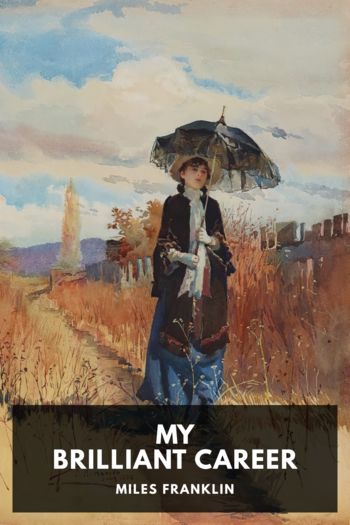Master of His Fate by James Tobin (books to read for teens .TXT) 📕

Read free book «Master of His Fate by James Tobin (books to read for teens .TXT) 📕» - read online or download for free at americanlibrarybooks.com
- Author: James Tobin
Read book online «Master of His Fate by James Tobin (books to read for teens .TXT) 📕». Author - James Tobin
She made the long trip from New York by automobile, then promptly took command of the patients. She had the manner of a savvy classroom teacher, likable but strict. She was not called “Miss Mahoney” at Warm Springs, just “Mahoney.”
We have only one report of the conversations Mahoney had with FDR in the last days of the summer of 1926, and we can’t entirely trust it.
The account appears in a book called Roosevelt and the Warm Springs Story, written in the early 1950s by a writer named Turnley Walker. He was a polio survivor who had spent time at Warm Springs as a youngster. For his book, he spoke with many of the people who had worked with FDR in the early years, including Helena Mahoney.
According to Turnley Walker, Mahoney and FDR had long talks about Mahoney’s experience with polio patients, including her difficult efforts simply to find those who’d been hidden away by their families in back bedrooms. They sketched plans for physical therapy at Warm Springs. Then they discussed FDR’s own condition. Here’s how the writer described the key part of that conversation:
MAHONEY: “What about your own legs, Mr. Roosevelt?”
ROOSEVELT: “I’ll find my improvement with the others. I’m not a man to accomplish much of anything alone.”
MAHONEY: “Of course I know nothing about your muscle setup. How much improvement do you expect?”
ROOSEVELT: “I’ll walk without crutches. I’ll walk into a room without scaring everybody half to death. I’ll stand easily enough in front of people so that they’ll forget that I’m a cripple.”
Now, that represents a significant change in FDR’s mindset. He had always said he intended one day to walk on his own. With Mahoney, he was describing quite a different goal. He seemed less concerned with his ability to walk and more concerned with the effect of his appearance on others. He apparently was thinking now that perhaps he could reach the White House without making a full recovery, if only he could dispel the feelings of embarrassment and revulsion that many people felt when they encountered the disabled.
But we can’t be sure that conversation really happened, at least not in those exact words.
Turnley Walker was writing at a time when many authors believed it was all right to describe historical events as if every episode, every scrap of conversation, could be re-created just as it occurred, even though that’s impossible unless the events have been recorded with cameras and microphones.
Still, unless Walker made up the entire conversation between Mahoney and FDR—and that’s very unlikely, since many details in Roosevelt and the Warm Springs Story can be corroborated by reliable documents—then it’s quite possible, even probable, that a conversation much like the one Walker reported really did happen.
There are other possibilities, too.
As Helena Mahoney spoke with Turnley Walker, she may have blended memories of several conversations with FDR—or her impressions of what FDR was thinking—into the memory of a single conversation. Possibly Mahoney’s memory of the conversation was shaped by her own beliefs about what Roosevelt should have been aiming for in his therapy—since all her professional training and values lay along those lines.
In any case, we’re left with the likelihood that something like that conversation happened.
What we know for sure is that in the fall of 1926 and the spring of 1927, FDR acted very much as if his thinking had taken the turn Mahoney described.
He took his place with the other polio patients in the pool. He was no longer “Old Dr. Roosevelt,” giving instructions. He was obeying orders from Mahoney, who began to re-introduce him to Wilhelmine Wright’s teachings, all of them aimed at making the maximum possible use out of the working muscles that remained to him.
At Warm Springs that fall there was a patient in her mid-twenties named Margaret Pope. A few years earlier she’d been a student at the University of Wisconsin and a state champion in golf. Then, at about the same time as FDR, she contracted polio and lost the use of her legs.
Margaret’s father, Henry Pope, was a wealthy manufacturer of stockings in Chicago. He had joined his daughter’s search for the best possible treatment. When the braces prescribed for Margaret were awkward and uncomfortable, Henry Pope assigned one of his engineers to devise new ones out of lightweight materials used in airplanes. When the Popes heard about Warm Springs, father and daughter visited early in 1926, and they, too, fell in love with the place. Pope wrote FDR afterward to say he was “regretting I cannot be with you in that beautiful pool, instead of in Chicago with a foot of snow and more falling.”
People like Henry Pope—with lots of money, a personal stake in polio treatments, and even wealthier friends like Edsel Ford, son of the automotive pioneer Henry Ford—were just the sort FDR hoped to enlist as supporters of Warm Springs. So he made it a point to stay in touch. When the Popes returned to Georgia in the fall of 1926, the friendship continued, and Pope began to take an interest in FDR’s own case. He considered what was immediately ahead of FDR—another cold New York winter indoors, without steady access to a heated pool and without an expert like Mahoney to coach him.
This gave Pope an idea. In Chicago, he told FDR, his daughter had been seeing a fine physical therapist named Alice Lou Plastridge, another student of Wilhelmine Wright’s. Wouldn’t it





Comments (0)